
When asked what one of the most appealing aspects of anime is, fans will usually mention character development. However, I’ve often wondered exactly what defines character development, at least in terms of anime narratives. Over the years, I’ve come up with two prominent types of anime character development, though I’m still debating whether that’s what they should both be called…
I can mention a ton of characters as examples for the two different types of character development I’m going to describe. But for the sake of not making this post longer than it already is, I’m just going to stick to the few that first came to mind. For simplicity’s sake, I’m going to refer to the two types as Type 1 and Type 2 respectively.
Probably the type of character development most fans refer to as character development is this one. Basically, this is the dynamic development where a character starts out one way, and over the course of events in the story and their relationship with other characters, changes for the better.
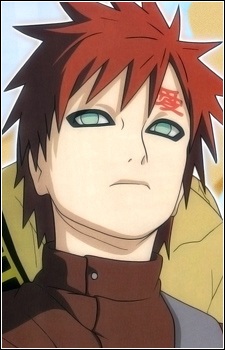
One of the most fleshed out examples of Type 1 development is Gaara from Naruto. When we’re first introduced to Gaara, he’s basically a cold, ruthless, uncaring killer. Later on, a few flashback episodes reveal his back story in detail about how he became the way he was. And eventually, he goes through a massive change in outlook and lifestyle thanks to events in the story and his relationship with Naruto. His somewhat distant and stoic personality doesn’t change, but he develops from miserable and bad to respectable and good.
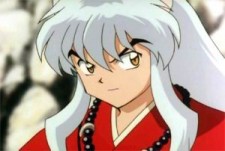
Inuyasha is another prime example of a character’s development revealed through their change over time. Anyone who’s followed the many episodes of the series knows that Inuyasha is not the same person he was in episode 1. He’s gradually changed for the better by becoming less arrogant and selfish and more open to love and trust thanks to his relationships with the other characters.
Type 1 developments like Gaara and Inuyasha abound in long-running shonen series; most of these series feature a number of characters who start out weak, insecure, and/or antagonistic and gradually change over time to become strong, confident, and/or protagonists because of the course of events, but mostly their relationships with other characters.

For another example, Shana’s development is a relatively simple Type 1. Again, she starts out cold and indifferent and gradually changes for the better thanks to her relationship with Yuuji. She emphasizes her dismissal of human emotions in the early episodes, but over time she develops those emotions herself and learns to accept them.
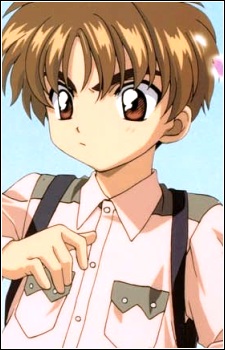
Going back to an older series, Shaoran from Cardcaptor Sakura is another example. He starts out arrogant and hostile towards Sakura but also confused and insecure about his supposed feelings for Yukito. Time and relationships change him, and by the end of the series, he’s a kinder and more confident boy who finally learns where his true feelings lie.
So the basic description of Type 1 character development is that the character starts out one way, usually negatively, and over the course of the series, due to events and interactions, changes for the better. They’re definitely not the same person at the end of the series as they were at the beginning. The character’s eventual change shows their development.
There’s another type of character development that I believe exists but isn’t as noticeable as Type 1. As I’ve stated, Type 1 development is revealed by how the character changes over time. For Type 2 however, change is not the revealing factor but simply the character’s various reactions, emotions, thoughts, and anything else that reveals different sides of their personality and thus makes them more sympathetic and real.

Examples would probably better illustrate Type 2, so I’ll use the main character of one of my recently completed series, To Aru Kagaku no Railgun. Mikoto’s development would be Type 2 because she doesn’t go through any major and gradual change over the course of the series; she’s still pretty much the same person she was in episode 1 as she is in the last episode, just with more friends and adventures behind her. However, over the course of the series, the situations she gets placed in, whether they’re simply her ogling Gekotan merchandise or something as intense as risking her life to save the Child Errors, we see many sides of her character – humor, anger, sadness, fear, embarrassment, pleasures, what annoys her (Kuroko’s flirting), what she likes (Gekotan and other childish things), what she hates (injustice), and what she’s insecure about (Touma’s power). This kind of revelation of showing a character as a many-sided individual with many unique quirks that aren’t necessarily relevant to the main story, rather than a one-dimensional, niche-filling bore is, I believe, a type of character development.

Another example of Type 2 development can be seen in the main protagonists of Spice and Wolf. While the relationship between Horo and Lawrence gradually blossoms, they themselves are well-developed characters not because of significant personal changes, but simply because we see many sides of their character over time. Especially for Horo, we see her being sassy, sad, concerned, angry, confident, etc,. Most likely she had these traits from episode 1, but much time is spent revealing them to the audience over the course of the series.
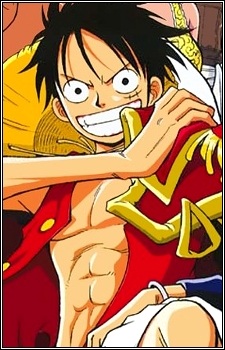
Although Luffy is one of the defining shonen heroes, I actually feel like his development is more of Type 2. He’s still the same fun-loving, brimming-with-confidence airhead he was in the first episode, except with more friends and epic tales to tell. The reason he’s well-developed is because he’s been placed in so many situations where many sides of his personality have come out – besides having fun and making light of things, we’ve seen him angry, sad, etc., as well as his sides of honor, loyalty, and distaste for injustice.
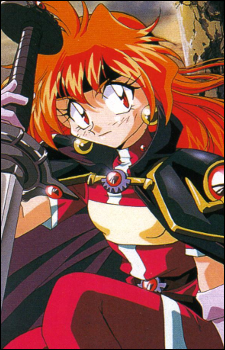
For an older series example, the main heroine of Slayers, Lina, is a good Type 2 example. From the beginning to the end, she remains the same hot-tempered, sassy sorceress. A few things have changed for her, such as her powers and relationships with her friends, but she’s basically the same person over the whole series. She’s well-developed by the gradual revealing of different sides of her personality in the many comical or dramatic situations she’s in.
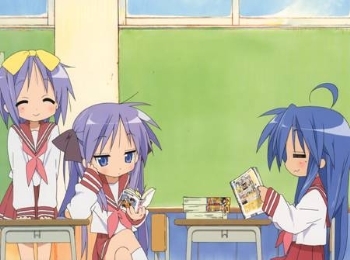
I’m still debating whether Type 2 should be called “character development” or perhaps a better name is in order (“character revelation”?) If it is, then I believe even series like Lucky Star and Azumanga Daioh could be said to have well-developed characters. Again, they don’t develop by change throughout the series – we simply see many sides of their personality based on their thoughts and actions that are revealed to us. For example, Kagami’s main role in Lucky Star is a serious straight-man to Konata’s otakuism. But in the episodes, we see other sides to her, such as shyness, concern, sibling rivalry, and other subtle things. Is this within the “character development” realm or something else?
Are these two types a good way of categorizing anime character development? Are there more types? Is Type 2 really relevant? As usual, I’m open to suggestions/feedback if you have any.
I think both types are certainly relevant, but often the two categories are quite applicable. For instance, Lawrence and Horo are developed in both ways, because they certainly change a great deal but they don’t lose their old ways instantly.
Indeed, both of these, by literary standards, are “character development.” Type 2 is actually the more standard form, as character development is not necessarily how the character changes, but how the facets of their personalities are revealed over the course of the plot. Type 1 is, more specifically, dynamic character development, in which a character actually undergoes a change. Both types, in anime and literature, are valued as techniques for creating a complex, realistic character.
Gaara is by far the most dynamic character I’ve encountered, even in comparison to characters in “normal books” and the classics I’ve read in English class. I love the way he goes through such a drastic change naturally and understandably, and that the causes are obvious: his exposition to Naruto and his friends, and the strong bond they share.
Spice and Wolf is an excellent example of character development; in every new situation, either Lawrence or Horo shows a new emotion, opinion, or feature of their personality. One of my favorite series!
@ Topspin
Yeah, I guess Horo and Lawrence can be both types. I feel like individually they’re more like Type 2, but as for their relationship and other subtle changes, more like Type 1.
@ Akikura
The “changing” method and the “revelation” method of character development are certainly relevant for literature and other non-anime forms of media. But with anime it’s different because the characters’ changes or personality traits that are revealed are usually meant to appeal to fans – thus the things we see in them are often cute, humorous, inspiring, or invoke other emotions that make us like them, unlike literature that’s written by a single author who often makes characters chaotic to reflect real life (not always the case obviously but it is with the literature I’ve read in school =P)
I think there is a third type of character development, where the Character becomes stronger over time, whether that strength is emotional, mental, or physical. Alot of anime have weak characters who may end up being a driving force for good or evil due to changes in the levels of strength or mental capabilitiels (not sure on spelling) they possess. If a character does show multiple types of development are there seperate classe for them than if they develop only in one of the ways? Is there a type AB, or BC, or AC? Also, are there different styles of such growth? Like an A1 and A2 type deal? If both statements are true, is there also A1B2 types to go into further summarised description of the growth of a character?
Sorry for the wall of rambling text, but I always come up with too many questions and It drives me insane If I do not ask them.